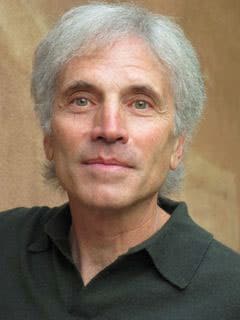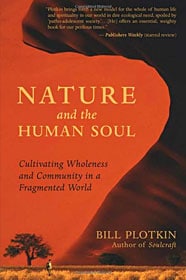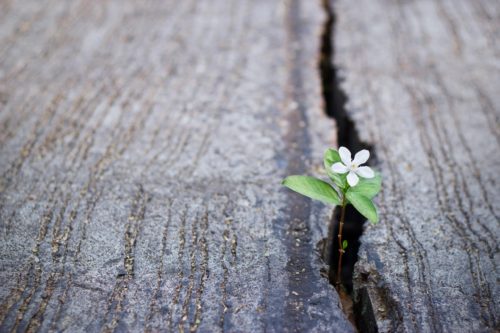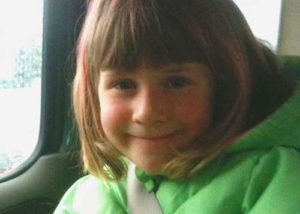[Estimated reading time: 5 minutes] Bill Plotkin’s book Nature and the Human Soul: Cultivating Wholeness and Community in a Fragmented World is based on the premise that a more mature human society requires more mature human individuals. At this time of ecological and social crisis on planet earth, Plotkin’s visionary work offers an alternative that is as profound as it is practical, and will, ultimately, deepen our understanding of who we are as human beings and how we can actualize our full potential.
This conversation between Bill Plotkin and writer and educator Grace Welker provides an introduction to Plotkin’s road map for human development, a brilliant and accessible model for understanding the mystery of soul growth.


Grace Welker Your work is guiding people toward their soul. Can you say a little bit about what the soul is for you?
Bill Plotkin Well, that’s an important question because the English word “soul” has been used in so many different ways. When I speak of the human soul, I mean a person’s ultimate place—our unique role or destiny—in the more-than-human world. You might say our soul is the ecological role we were born for. I love how contemporary poet David Whyte speaks of the soul: as the largest conversation we are individually capable of having with the world.
Grace Your model of the Soulcentric Development Wheel describes what a human life looks like when there is an understanding of the soul—what it needs, what it wants, how we come into relationship with it, and how we can steer our lives by this relationship. You talk about eight stages of a full human lifespan—two phases each in childhood, adolescence, adulthood, and elderhood. And you say that most contemporary Western people only reach the third stage, which, psychologically speaking, is early adolescence. This sounds like a problem.
Bill Plotkin It’s important to understand that it’s possible to be well past your teens chronologically, but only in early adolescence psychologically. In the third of the eight soulcentric life stages, a person’s primary psychological emphasis is the cultivation of social identity and belonging. This is, of course, a healthy orientation for teenagers, but it is a sign of developmental arrest when older people remain predominantly focused in that way.
I characterize contemporary Western society as not only adolescent but as patho-adolescent. A society becomes sick or pathologized when there are relatively few people in more mature stages to provide healthy guidance. You end up with a society like ours—one that is very materialistic, egocentric, competition-based, and violence-prone.
Contemporary poet David Whyte speaks of the soul: as the largest conversation we are individually capable of having with the world.
Grace So how does a person move out of stage three?
Bill Plotkin The way to progress developmentally is to fully embrace the psychospiritual tasks of the stage you’re in. If you’re in stage three, which I call the Oasis, your developmental task is to cultivate both personal authenticity and social acceptance. In the contemporary Western world, we put all the emphasis on the social-acceptance half of that task, and neglect the practices that enable us to become more real, more authentic as social individuals.
Grace That may be one of the reasons people feel so at home at a place like Kripalu. They are discovering how to connect with their authenticity and finding social support for it. What are the challenges to accepting one’s authentic nature?
Bill Plotkin The most common challenges result from developmental deficits incurred in childhood (the first two life stages). For example, one of the tasks of early childhood—these are the parents’ tasks on behalf of the child—is the preservation of the child’s innate innocence. When this task is not successfully addressed in stage one, a person will, from that point onward, have difficulty being present to their own experience, because our innocence is really our capacity for presence. Many, many people in the world today suffer from this very fundamental deficit, the inability to be present in the moment. And it is difficult to become personally authentic if we can’t be present to ourselves and others. That’s why meditative, contemplative, and yogic practices are so important for Western people—simply to help us come back to the now.
Learning the enchantment of the natural world is best accomplished through lots of free play time in wild and semi-wild environments.
Grace One of the things I appreciate most about your work is the message that it’s never too late to address developmental tasks we have missed or that are incomplete. You also clearly define two tasks in each stage, one culture-oriented and the other nature-oriented. Can you give an example of a nature-oriented task that normally would be addressed in childhood, but which people in their twenties or later might need to revisit?
Bill Plotkin A very important one presents itself in stage two, middle childhood. The nature-oriented task in this stage, which I call the Garden, is to learn how to be fully at home in the more-than-human world, which in the West we think of as simply “the outdoors.” But we become enchanted with the natural world in two ways: by exploring our own human nature—our bodies, imaginations, and our emotions—and by immersing ourselves in the other-than-human world, the wild nature of other species and land forms and water forms and weather forms. Learning the enchantment of the natural world is best accomplished through lots of free play time in wild and semi-wild environments. This crucial developmental activity of childhood has become minimized or entirely neglected in the contemporary West.
If we don’t feel at home in the more-than-human world, then at the very core of our experience is a sense of homelessness, of rootlessness. And if we live with this kind of core anxiety—which may or may not be conscious—then cultivating personal authenticity becomes very difficult. It’s perhaps impossible to become real when we don’t feel at home in the world.
Grace I can see why our contemporary way of life—in which people are very often cut off from the “external” natural world as well as the natural world of our own bodies—would thwart people’s development past stage three. Let’s continue developing, though, at least theoretically. Can you say a little about stage four?
Bill Plotkin Once we fit in socially and we’re at home in this world, we naturally start asking the bigger, existential questions, like “Okay now, what is my life really about? What’s my potential? What’s the unique contribution that I can bring to this world?” The goal of stage four is to uncover our destiny.
[INSERT PULL QUOTE: Once we fit in socially and we’re at home in this world, we naturally start asking the bigger, existential questions.]
In both of my books, I describe my core understanding of how I was shaped to be in this world, in particular that my task in life is to weave cocoons. A cocoon is where a caterpillar dies to its caterpillar life and is reshaped by the Mystery into its adult version, a butterfly. We humans, too, are designed to go through this kind of transformation at a certain point in our life, namely in stage four, which I call the Cocoon.
Let’s think about the butterfly for a moment. In the cocoon, we might say that all it really learns is that it is meant to fly. It grows wings, but it doesn’t know where it’s supposed to fly to or with whom it’s supposed to mate or really how it’s going to live its life. It simply learns, “I am to be a creature that flies.”
In a similar way, as humans in stage four, we learn something mystical about our relationship to the world; we uncover our soul image or story. But we don’t yet know how that will manifest, how we will choose to embody it. For example, when I was given the image of weaving cocoons, it didn’t come with instructions of specifically how to do that. The image didn’t say that I should become a workshop leader or a writer, a psychologist or a wilderness guide.
Grace In other words, what you experience in stage four is more of a vision that inspires and sustains you. You have said that a fully psychologically mature adult knows why they were born—the particular truth, the piece of the mystery they were born to bring into this world—and they’ve made a commitment to living that into the world.
Bill Plotkin Emerging from the Cocoon with a soul image or soul story, the person moves into stage five, early adulthood, which I call the Wellspring. There the developmental task is to find ways of bringing this concentrated vision into form, identifying what I call delivery systems—as well as further exploring the soul image or story and the nature of one’s soul powers.
A fully psychologically mature adult knows why they were born—the particular truth, the piece of the mystery they were born to bring into this world.
Grace I have to say that the idea of living in a world of people who have a sense of their purpose and the courage to bring it into the world gives me a lot of hope. I’m wondering where you personally access your hope.
Bill Plotkin Well, I feel most like myself and most at ease in the world when I’m in wild settings. That’s where I am consciously connected with the very roots of my being in this lifetime, and it’s those roots that give me hope.
The soul possesses passions to be in the world in a certain kind of way. You might say we wouldn’t have been born if our soul wasn’t deeply enthusiastic about bringing a certain kind of gift into the world. So when we consciously discover what that gift is, we find loads of enthusiasm and a sense of gratitude and good fortune to be alive with the opportunity to contribute our particular kind of mystery to this world. Another way to say it is this: the soul itself is what gives us our greatest hope.
*****
Bill Plotkin, PhD, is a depth psychologist, wilderness guide, and ecotherapist and founder and president of Animas Valley Institute based in Durango, Colorado. He is the author of Nature and the Human Soul: Cultivating Wholeness and Community in a Fragmented World; Soulcraft: Crossing into the Mysteries of Nature and Psyche; and other books.
[originally published by Kripalu Center for Yoga & Health]




